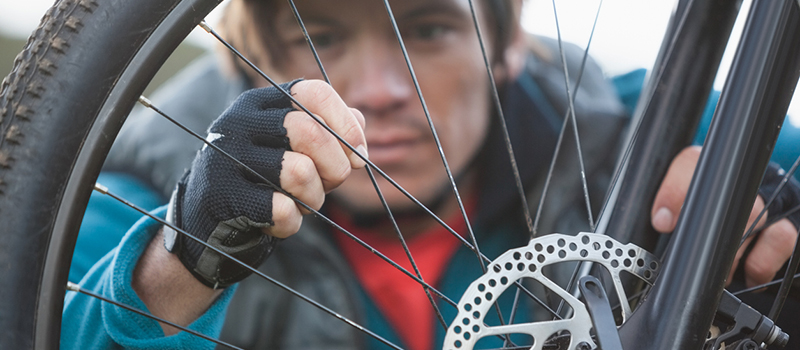Five Bicycle Safety Tips To Practice During Each Ride
Five Bicycle Safety Tips To Practice During Each Ride

Five Bicycle Safety Tips To Practice During Each Ride
Riding your bicycle is good exercise and can be an economical and eco-friendly way to get to work, school, or the store. Depending on where you live, you could have to share the road with motorists, which can be dangerous. Practice the below bicycle safety tips to help protect you and everyone on the road.
1. Select the Right Gear
Safety starts before your ride. As you gear up, follow these safety measures.
- Choose a bike that fits your frame and is easy to control. Also, adjust the seat and pedals before each ride.
- Select a helmet that's certified by the Consumer Product Safety Commission and is the correct size and fit. Helmet sizes vary depending on the manufacturer, so try on each helmet before you buy.
- Wear clothing that fits properly. Baggy clothes or untied shoelaces can get caught in the tire, chain, or pedals.
- Add reflective gear to your bike and clothing. In addition to a flashing white front light, red rear light, and reflectors on the pedals and spokes, install a bell, horn, and rearview mirror. Wear bright, neon-colored clothing during daytime rides and a reflective vest during all your rides, too.
- Store your gear in a wearable backpack or in a bag strapped to the back of your bike. By securing your belongings, you can reduce distractions and safety hazards.
- Perform regular maintenance and a pre-trip check on your bike.
2. Reduce Falls
- If you ride over potholes or run into obstacles, that could cause a fall or injury.
- To help avoid falls, first inspect your bike before your ride. Inflate the tires properly, align the handlebars, check the brakes, and adjust the seat and pedals.
- Then practice riding off the road. Get comfortable with your bike before you ride on the road with traffic.
- Once you start your ride, pay attention at all times. You can help reduce your fall risk when you watch for obstacles and slow down.
3. Follow Traffic Laws and Rules
While your bike is different from a motorized vehicle, you still have to follow the rules of the road. For example, ride in the same direction as traffic, and stay in your lane and off the sidewalk. Also, obey traffic signals, and utilize hand signals when turning or stopping. Avoid listening to music or texting as you ride, too, because these and other distractions affect your mental, visual, and tactile focus.
4. Ride Defensively
Pay attention and stay alert and focused during every ride. You're better able to avoid accidents or collisions when you're prepared for whatever you may face on the road.
To implement defensive riding techniques, always assume that motorists will not see you. Be alert to the possibility of vehicles swerving into your lane or cutting you off. Also, take up space. Whether you hug the curb or the center line, share the road as you increase your visibility and ability to maneuver away from potential hazards.
5. Plan Your Route
Just like choosing your insurance agent, you can compare route options and select the safest one. Plan to ride on low-traffic roads, wide streets, or bike paths. Give yourself extra time, so you don't have to speed. Check the weather forecast before your ride so you know what type of road conditions to expect.
